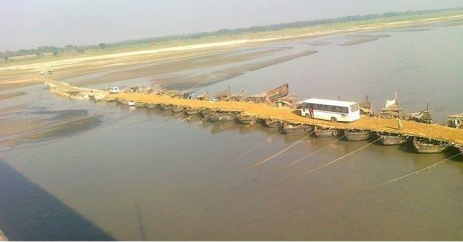Mor Temor
Arch. Mor Temor is international Architecture firm committed to designing unique buildings and one of a kind architectural concepts.

2. Floating Structures: Past, Present and future.
Early applications of very large floating structures take the form of floating boat bridges over rivers that date back to antiquity (Brown, 1993). About 480 BC, King Xerxes of Persia led his army across the Hellespont, now called the Dardanelles, using two rows of floating bridges, each consisting of about 300 boats laid side by side as shown in Fig. 1 (Study Group of World Cities, 1988).

Fig. 1 King Xerxes’ Floating Boat Bridge across the Hellespont.
In 1874, a 124-m long floating wooden railroad bridge was constructed over the Mississippi River in Wisconsin and it was repeatedly rebuilt and finally abandoned. Brookfield Floating Bridge is still in service and it is the seventh replacement structure of a 98-m long wooden floating bridge (Lwin, 2000).
A 100-year-old floating bridge made of 42 boats linked with chains is still in use in Yanshan County, Jiangxi Province (China). The 187-meter-long bridge was built in 1908 during the Quing Dynasty.
Fig. 1.1 The old bridge made of 42 boats linked with chains in Yanshan County (China).
In 1912, the Galata steel floating bridge was built across Istanbul’s Golden Horn where the water depth is 41 m. The 457-m long bridge consists of 50 steel pontoons connected to each other by hinges. However, in 1992, soon after a new bridge was erected just beside the original bridge, a fire broke out the old Galata floating bridge was burned down. The sunken bridge is placed upstream after having been raised from the seabed (Maruyama, 1998).
Recent Floating structures have been used for different purposes for quite some time in Japan, Canada, Norway, USA, UK, Brazil, Saudi Arabia, and Vietnam. China, Korea, Israel, the Netherlands, Germany, Italy, New Zealand, and Singapore are going to do so in the near future.
1.2 People cross a floating bridge over the Tigris River. Baghdad, Iraq.
The modern floating structures are built using advanced techniques, can be constructed of wood, concrete, steel, or a combination of different materials, depending on the design requirements. However, until today ancient techniques are used for the construction of such structures, like in China, lately, they used the idea of a floating boat to build a bridge using old techniques.

Fig. 1.3 China, floating structure in the form of a floating boat, using ancient techniques.
Here we give a brief overview of already completed floating structures and describe the most interesting proposed floating structures applications;
Arch. Mor Temor